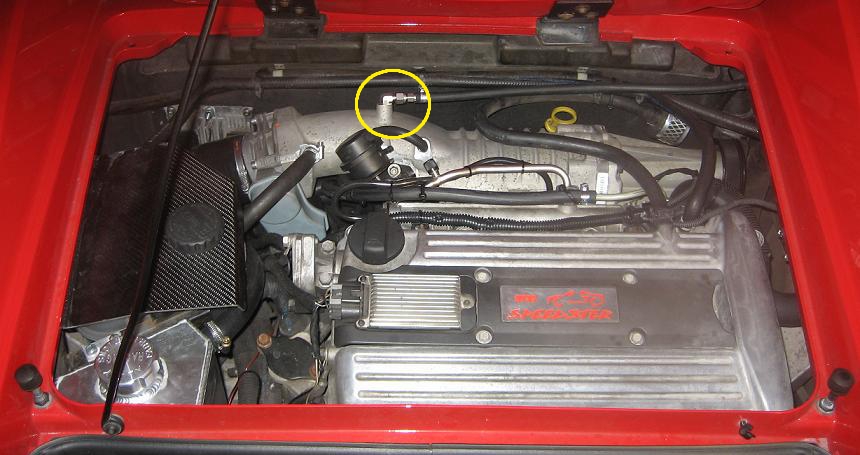As i am technically challanged, my main job was making coffee and taking pictures.
It was done in 2 (very long) days.
Day 1; The cooling and the hosework:
First step is of course the front clam off.
Also took the opportunity to put maze over the air inlets in the crash box

Then bleed the radiator, and take it out, as it was OEM, thus a ticking timebomb.
The radiator is only screwed to the radiator housing. When all screws are loose, they come off the crashbox at the same time

The new elise-shop radiator is bolted on top of the pro alloy radiator. Some small strips of plastic are put between the the 2 to make sure the warm normal radiator does not affect the SC one.
The existing fan plug is cut off the original fan for reuse.
The 2 new smaller fans (that belong to the pro alloy kitt) take over the task of the larger old one.
The old fan plug is connected to both connectors on the new fans. All put together:

In order to test the fans if they work you can activate them by putting a small set of plyers on the 2 thick wires from the second relay, which should cause the fans to spin.

Put something light on the radiator. If it blows up, the electrics are ok. If not, you need to swap the wires on your plug.

I had the cooler version with pipes on the drivers side (euro). So 2 holes need to be made in the radiator housing.
The whole shabang is then ready to be put back in, but not just yet as we need all the room there is for the hoses part.
There are 2 methods to get the hoses in. First the method we used:
Saw a temporary hatch in the inside of the sill:

Pay attention not to stick the saw part in too deep, as important hoses allready go through there.

The white color you see, is the first foam layer to penetrate.
For this we created a pipe with teeth that fits exactly in a vacuum machine pipe.


This way you can easily turn it around, and saw out the exact circle you need (the foam is about 4cm wide, and very soft)

In the background you can see an identical foam layer (also 4 cm to go through).
Keep in mind that the chassis is smaller in the front then the back, so keep the pipe in line with it, to make sure you end up correctly in the back.



























































